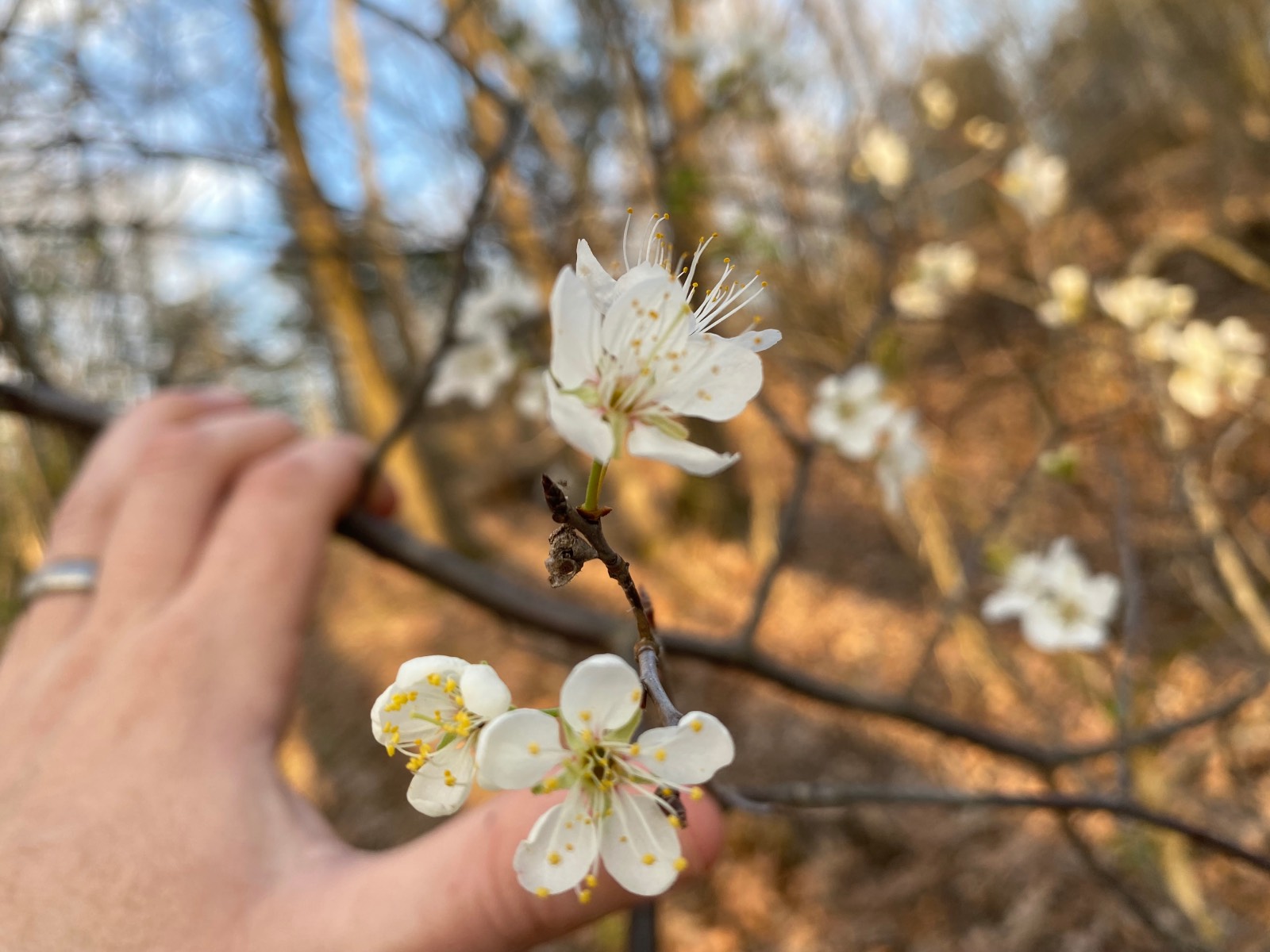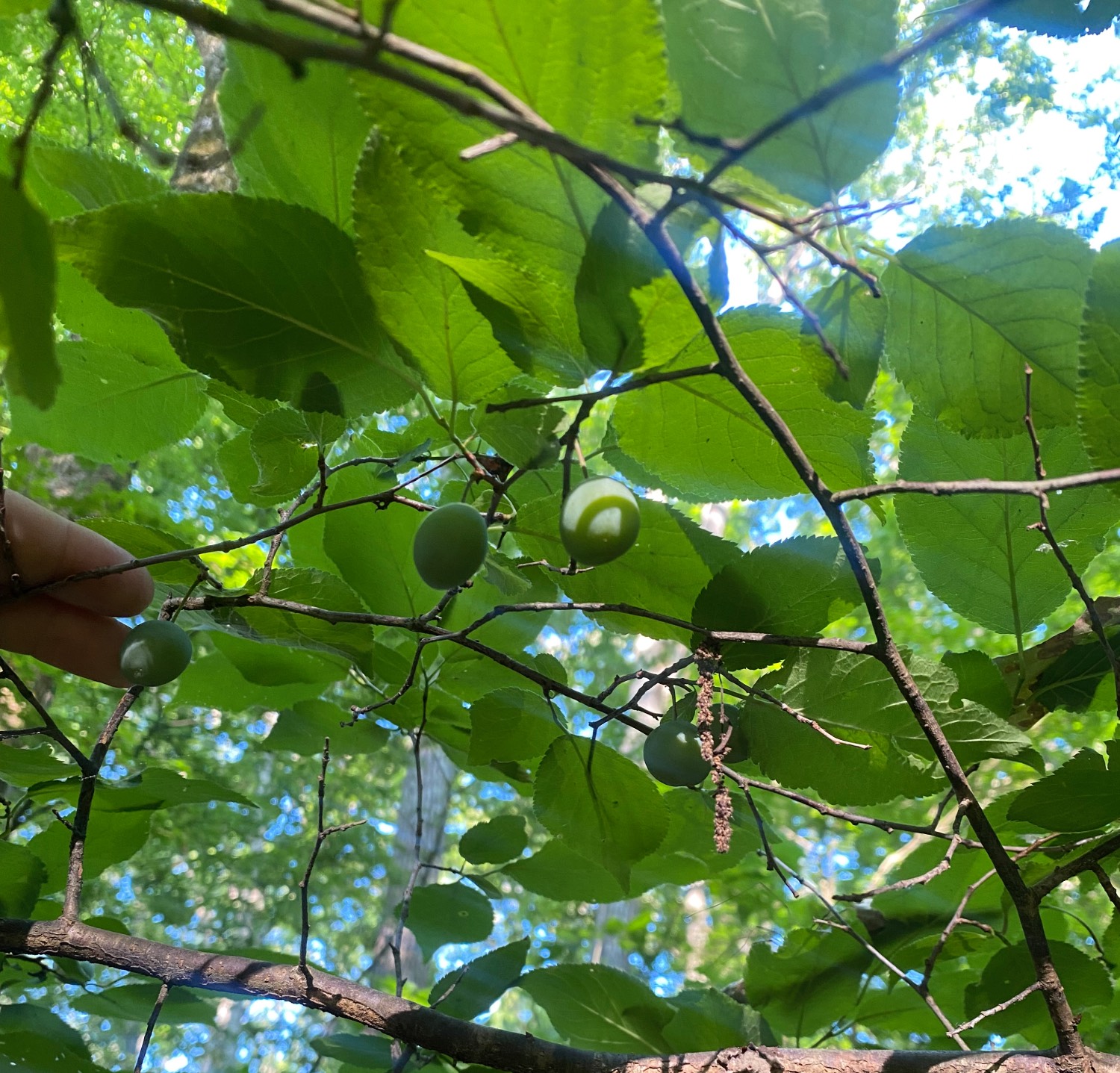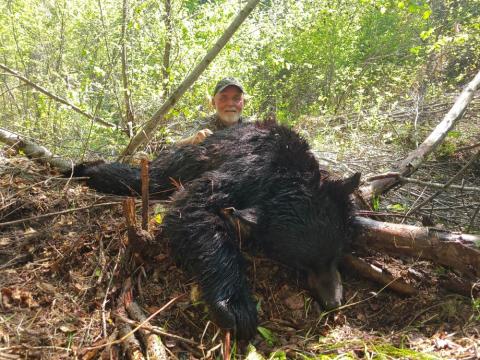Chris Bridges
Of all of the things that we do to improve wildlife habitat and subsequently the quality of hunting experiences on our sites, perhaps nothing is more important than selection of high-quality perennial plants that attract the species that we are interested in. This obviously requires an understanding of plant characteristics, the timing of fruit production, wildlife behaviors and dietary preferences during different times of the year. When consideration is given to providing long-term cover, soft mast production and vigorous growth on a variety of soils, native plums are a valuable resource for many different types of wildlife habitat improvement projects.
What Types of Plums are Native?

Pictured: Mexican plum flower
First of all, we must recognize that plums are valuable parts of many farmsteads and having good trees that consistently produce are worth having for many reasons. However, the fresh fruit that many of us have been fortunate to enjoy may be coming from different types of plums. Domestic plums that have been planted on many farms and orchards may be European or Asian in genetic origin. Certainly, these trees are nice to have around for raising large fruit but they may not provide the same benefits to wildlife as some of our native plums.
Additionally, native plums often are more well-adapted to our soils, climate, disease and insect pressures. Native trees have flourished without fertilizer, insecticides or fungicides. While they are not immune to these problems, they are often more able to flourish with fewer inputs in wildlife plantings. While there are many different native plums in the South, some of the most common managed species are American plum, Mexican plum and Chickasaw plum. Although the fruit of these native species is most often smaller than Asian or European plums that we find in grocery stores, native plums have many advantages in adaptation to our sites and benefits provided to wildlife.
How to Manage Plum Trees
The first step to managing these trees is to learn to identify them. Because native plums grow as either short trees or tall shrubs, I have found that they do not stand out much in summer. However, they are among the first trees in the Spring to flower and I have had much better luck marking trees by finding the white flowers in March and April. These flowers also help to illustrate the importance of these trees for pollinators. After flowering, the ovate leaves with serrated margins help to distinguish these species.
Native plums do not typically get over forty feet tall. Mexican plum grows as a single trunk, while Chickasaw and American plum will often send up suckers or shoots from the roots that help to form dense thickets. It makes sense that these dense stands can be helpful nesting habitat for birds and small mammals. Chickasaw also can have thorn-like branches which likely adds to its ability to provide cover to many species of wildlife.
Likely one of the reasons that I first took notice of these native plums was the unique patterns of their distribution across the Southeast. Chickasaw plum is common in areas of Oklahoma and Nebraska, but also interestingly in Tennessee, Mississippi and Alabama. Early European botanists attributed the spread of this tree to Native American plantings, which led to the name for Chickasaw plum. To think that some of the wild plum stands that we encounter today may have originated from Native American cultivation is really interesting.

Pictured: Green Mexican plums
As summer temperatures increase, native plums can be identified by their small round fruit which transitions from green to red or purple. The taste and timing of this fruit can vary with different species and cultivars, which may have been selected for different characteristics like early fruiting, large fruit, leaf color, etc.
So, the first step in using these plums for wildlife habitat improvement is to recognize them and avoid spraying them when treating fencelines or roadsides with herbicides. Identification in Spring and flagging these trees can help to avoid inadvertently mowing them down during the summer. Similarly, I have located Mexican plum in the edge of upland hardwood stands where some control of competing vegetation was helpful in increasing sunlight and subsequently improving fruit production.
Additionally, these trees make a perfect addition to long-term wildlife plantings and soft-mast production orchards. Because there are several species and many more cultivars available commercially, it is worth spending some time to identify nursery stock that is well suited to your climate and soils. I have found native plums to be fairly tolerant of droughty soil, which can come in handy when re-establishing vegetation on rocky roadsides or even when stabilizing sand blows following levee breaks in river bottoms. Although no tree is truly drought resistant, native plums grow well on sites that are too dry for other species.
Given the benefits that native plums provide for soft mast production, pollinator habitat and control of soil erosion, I believe that they are a useful plant to have in a wildlife planting or orchard. Research some of the offerings available at nurseries to determine which would best meet your needs for timing of fruit production and growth habit. Though Asian and European plums play important roles in producing fruit for sale, native plums can also provide food and cover for many species with less need for management of pests or supplemental irrigation, which should be helpful at many isolated planting sites. Just as Native Americans found good uses for these trees for many centuries, so too should we use them to make lasting improvements on the lands that we manage for wildlife.




























